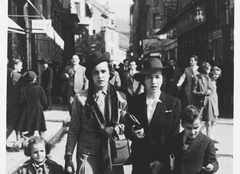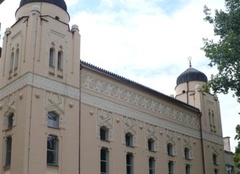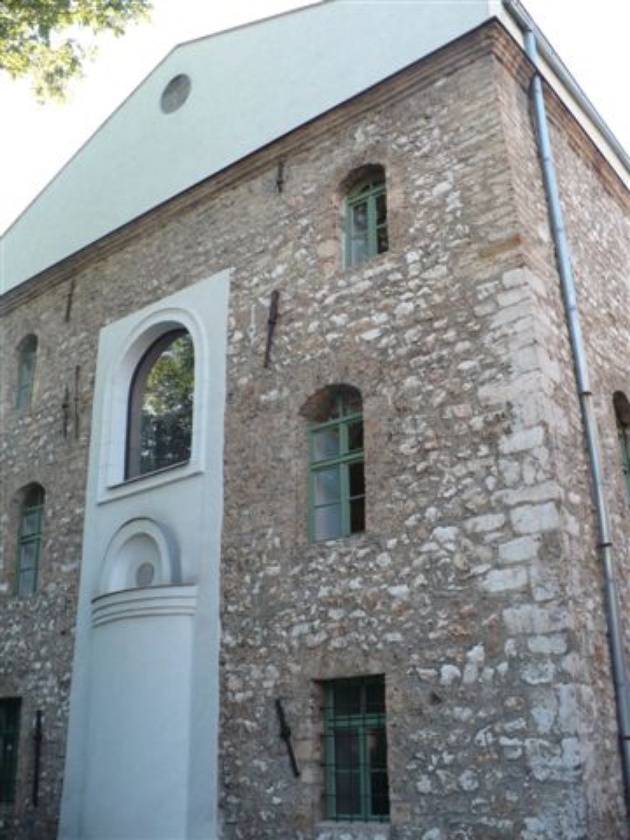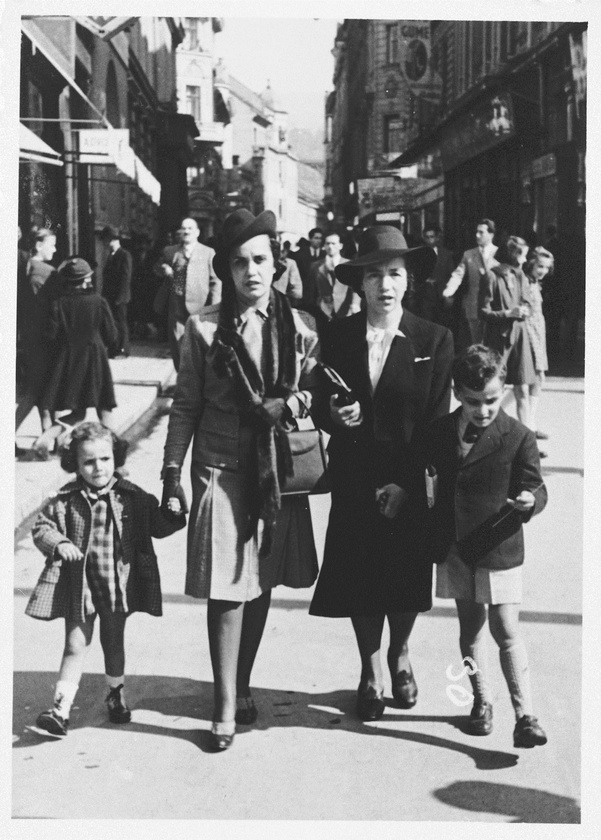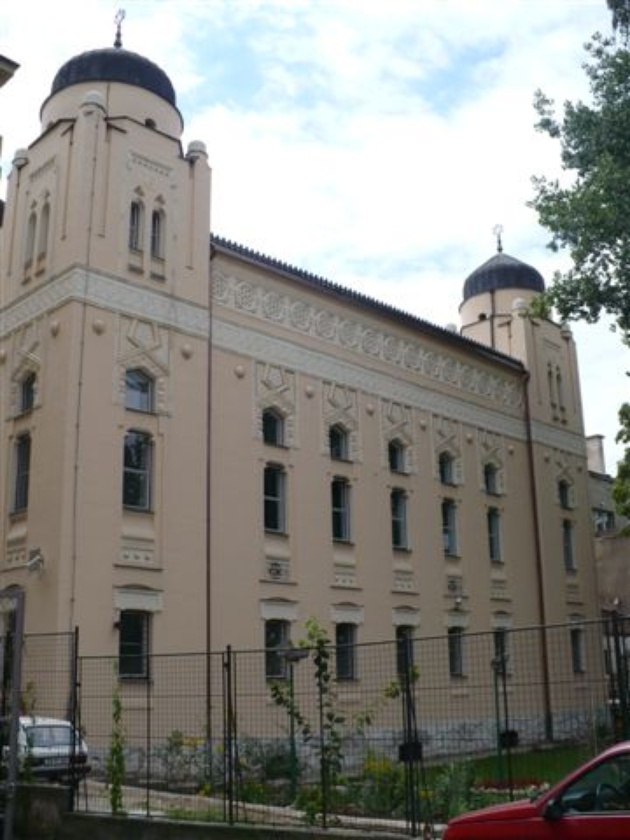Sarajevo
Pronounced "Sah-rah-YEH-voh"
The first Jews arrived in Sarajevo in the early 1500s after being expelled from Spain in 1492. These Sephardi Jews spoke Ladino, a dialect of Medieval Spanish written in the Hebrew alphabet. Jews often continued their professions as merchants or pharmacists.
With permission from the local Ottoman (Turkish) ruler, an officially-designated Jewish Quarter was established near the main market of Sarajevo in 1577. In 1581 the Jewish community built its first synagogue, along with a nearby shelter for the poor. A Jewish cemetery followed in the mid-1600s, where some of the original gravestones weighed as much as four tons.
Over the following centuries Jews played an active role in the trade of the Ottoman Empire. However, they were prohibited from wearing the color green and had to pay higher taxes. Reforms in the mid-1800s finally granted all non-Turks equality before the law, and in 1876 a Jew was even elected as a deputy to the Ottoman parliament.
In 1878 Bosnia was occupied by the Austro-Hungarian Empire and more Ashkenazi, or European Jews, began arriving from Austria. Due to their cultural differences, the Ashkenazi and Sephardi communities remained largely separate. Ashkenazi Jews spoke German and often worked in finance and international trade. In 1902 the Ashkenazi community built its own synagogue.
In contrast, members of the Sephardi community were more likely to earn a living as local merchants or unskilled laborers. Survivor Riki Roussos recalled, “They were electricians, they were carpenters, they were tailors.” Roussos’ own father worked as a carpenter “making cars for a railroad station.” Roussos said, “We were not a rich family,” adding, “I was poor, but very happy. I had a very, very happy childhood… a lot of love to go around to substitute, probably, for the material things that we didn’t have at that time.”
In 1892 the Sephardi community established a welfare organization, La Benevolencija. Roussos said, “They helped Jewish kids, whoever wanted to go to trade schools or to gymnasia [high school].” Roussos remembered that her cousin was able to attend medical school thanks to the support of the Jewish community.
The turn of the century saw a proliferation of Jewish cultural and aid work. Eventually La Benevolencija expanded to fund publications, a library and a museum. Other groups included a choral association, a Jewish workers’ organization and “La Alborada” scientific and literary weekly, as well as a number of Jewish schools and a theological seminary. Roussos herself “went to a Jewish kindergarten, was a Gan Yeladim they called it.” Afterward she and her brother attended a public school.
In 1914 the city of Sarajevo became known across the world as the site of the assassination of Austrian Archduke Franz Ferdinand. The conflict that ensued, World War I (1914-1918), resulted in the dissolution of the Austro-Hungarian Empire and the formation of Yugoslavia. Jews enjoyed equal rights under this new state.
Roussos recalled from this time in her childhood, “Most of Jews in Yugoslavia were observant Jews. We had a Sephardi community that was big and we had an Ashkenazi community.” The Sephardi community opened a new synagogue in 1932, so by the time of Roussos’ childhood, “We had three temples in Sarajevo, two Sephardi and one big Ashkenazic temple.” Roussos remembered that her family kept kosher, saying, “My mom used to bake even her bread at home.”
In the Sarajevo elections of 1928, Jews won 5 of 35 city council seats. However, Jews were increasingly targeted as the Nazi party gained influence across Europe in the 1930s. Although Roussos remembered that her family had “a few friends” from the local Christian population who would invite them over for coffee after Christmas services, she also stated that in Yugoslavia “nobody liked Jews actually.” In 1940 the country passed its first antisemitic laws, limiting the number of Jewish students who could enroll in schools and universities. Less than 10 years after it was built, the new Sephardi synagogue was destroyed after the German army invaded the city on April 15, 1941.
The centuries-old Jewish communities of Sarajevo—a city once known as the “Jerusalem of Europe” for its tolerance of different religions—were extinguished.

